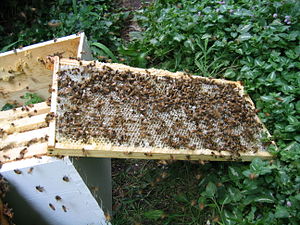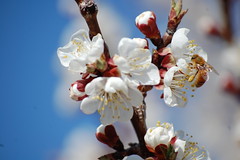Dr. Martin Luther King‘s “I Have A Dream Speech” is a timeless work that is relevant today, particularly to the movement for sustainability. This famous address delivered at the March on Washington 50 years ago focused on the plight of Blacks in America and the racial injustices of that era, and Dr. King’s words and leadership served as a lightning rod for social and political upheaval in America. Since that famous speech, Americans, specifically Blacks, have witnessed major changes in their lives, gaining greater access to jobs, better housing and equal education. However, there still is a lot of work to be done.
As we fast forward to 2013, we see that Dr. King’s speech is still relevant today in terms of the fight for sustainability, not only in the United States, but also globally. My personal recognition of this fact comes as a result of taking an online class at Stanford University on the “Introduction To Sustainable Product Development and Manufacturing”. This class includes lectures, videos and interactive group projects with fellow students globally, along with peer review.
The course begins with a video on the “Story Of Stuff,” an eye-opening explanation on the textbook theory of “materials economy” — the movement of “things” from extraction to production, distribution, consumption and finally depletion. The author, Annie Leonard, explains how this linear theory is flawed because in its application to a finite world, it fails to address the impact of outside forces on production of goods, i.e., the environment, societies, cultures and economies. This theory also does not account for the influence of corporations on our lives and the policies and programs adopted, which are undertaken solely for the purpose of improving the bottom line. The rise of mega corporations that lobby to reduce government oversight and then exploit natural and human resources, creating inferior products with reduced shelf life to encourage heightened consumerism has resulted in a global crisis. The natural resources of the earth are being depleted at an alarming rate, and humans are being misguided, overworked and exploited. This is not sustainable.
We now witness the redefinition of the term “value” being reduced to “ownership of stuff”. It then follows that certain segments of the world population, specifically, the economically disadvantaged (generally minorities and emerging nations), are assigned a lesser value in society. The desire to “raise one’s value,” albeit based on erroneous definition of the term, leads to exasperating attempts to “keep up with the Joneses”. So many people are mentally and physically exhausted and distressed, it is no wonder that the American Psychiatric Society had to revise the DSM codes. While the movement for sustainability largely focuses on water and energy conservation, protection of natural resources and upgrades to infrastructure, the dialogue must also include human rights and justice. Products and services must be priced fairly to include a living wage for laborers. Also, access to health care and health insurance must be recognized as a part of the human rights that D. King spoke about. The honesty and character of a person must trump “ownership of stuff”.
Fifty years ago, Dr. King voiced our “need for liberation“. We still need liberation, principally from the confines of materialism and unhealthy lifestyles. He also said, “[w]e must forever conduct our struggle on the high plane of dignity and discipline . . . we cannot walk alone”. This call for self-service and determination rings true today. Each one of us can start with small steady steps to endorse sustainable living. We can get off the endless cycle of wasting money on inferior products and services. We can support businesses that employ green practices and that invest in its employees. We can take responsibility for the space we occupy on this earth. The first step to achieve sustainability is to believe in it. This belief begins with a dream of the possibilities, and the grassroots commitment of each of us will lead to a revolution.
I invite you to watch the video of the “Story of Stuff” and to commit to carry on the dream of Dr. Martin Luther King. To do so is to live green, be green.






